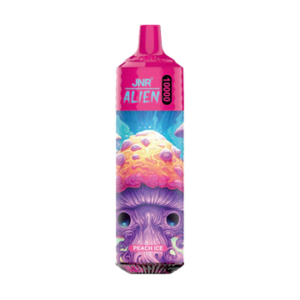The Essential Guide to Pasteurised Fruit Juice: Process, Benefits, and Distribution
Introduction
Pasteurised fruit juice is a staple in the beverage industry, ensuring both safety and extended shelf life without compromising quality. The process of pasteurisation plays a critical role in eliminating harmful microorganisms while maintaining the freshness and natural taste of fruit juices. Whether refrigerated or shelf-stable, pasteurised fruit juice meets the diverse needs of manufacturers and consumers alike. This article explores the different methods used in processing pasteurised fruit juice, the benefits it offers, and the best distribution practices to maintain its integrity.
Understanding Pasteurised Fruit Juice
Pasteurisation is a heat treatment process designed to eliminate bacteria, yeasts, and molds that may be present in fruit juice. This process allows manufacturers to ensure the safety of their products while extending shelf life. Depending on the desired product image and distribution method, different pasteurisation techniques are used for pasteurised fruit juice.
1. Small Tunnel Pasteurizer for Refrigerated Pasteurised Fruit Juice
For the highest quality and freshest taste, pasteurised fruit juice is often processed using a Small Tunnel Pasteurizer. This method involves heating the juice at precise temperatures and then rapidly cooling it before packaging. The resulting product retains its natural flavor, nutrients, and color while requiring refrigeration to maintain freshness.
2. Extended Shelf Life Processing for Pasteurised Fruit Juice
Some pasteurised fruit juices are treated for extended shelf life while still being stored under refrigeration. This method involves advanced thermal processing techniques that eliminate pathogens without affecting the overall sensory quality of the juice. These products cater to consumers looking for high-quality juice with longer usability.
3. Aseptic Processing for Shelf-Stable Pasteurised Fruit Juice
Aseptic processing is a widely used technique for producing shelf-stable pasteurised fruit juice. This process involves sterilizing the juice and packaging materials separately before filling under sterile conditions. Aseptic pasteurised fruit juice does not require refrigeration, making it a convenient option for consumers and retailers.
4. Hot-Fill Pasteurisation for Convenience
Hot-fill pasteurisation involves heating pasteurised fruit juice to high temperatures and then filling it into pre-sterilized bottles or containers. The filled product is sealed immediately to prevent contamination, ensuring shelf stability without the need for refrigeration. This method is commonly used for juices with added preservatives or natural acidity that enhances their longevity.
Benefits of Pasteurised Fruit Juice
Pasteurised fruit juice offers several advantages, both for manufacturers and consumers:
1. Enhanced Food Safety
The pasteurisation process effectively eliminates harmful microorganisms such as E. coli, Salmonella, and Listeria, making fruit juice safe for consumption.
2. Longer Shelf Life
Depending on the processing method used, pasteurised fruit juice can remain fresh for weeks or even months, reducing waste and improving convenience for consumers.
3. Retention of Nutrients and Flavor
Advanced pasteurisation techniques help retain essential vitamins and minerals while preserving the natural taste of fruit juice.
4. Greater Market Reach
With aseptic and hot-fill processing, manufacturers can distribute pasteurized fruit juice without the constraints of refrigeration, expanding their market reach globally. These advanced packaging techniques ensure that the juice remains safe and fresh for an extended period by eliminating harmful microorganisms while preserving its natural flavor and nutrients. Aseptic processing involves sterilizing both the juice and packaging separately before filling, ensuring a completely sterile environment. Hot-fill processing, on the other hand, uses high temperatures to kill bacteria before sealing the juice in airtight containers. By eliminating the need for cold storage, these methods reduce distribution costs and environmental impact while allowing brands to enter new markets worldwide.
Choosing the Right Pasteurisation Process
The selection of a pasteurisation method depends on multiple factors, including distribution strategy, target audience, and product type. Manufacturers should consider the following when choosing a pasteurisation technique for their fruit juice:
- Target Market: If consumers prefer fresh-tasting juice, a Small Tunnel Pasteurizer or extended shelf-life processing may be ideal.
- Storage Requirements: Aseptic or hot-fill processing is preferable for products that need to be stored at ambient temperatures.
- Packaging Preferences: Certain pasteurisation methods require specific types of containers to maintain sterility and quality.
The Bottom Line
Pasteurised fruit juice remains an essential part of the beverage industry, providing safe, nutritious, and flavorful options for consumers. The choice of processing method depends on the manufacturer’s goals, whether it is maintaining a fresh, refrigerated product or producing a shelf-stable beverage. With innovative technologies and techniques available, companies can efficiently produce high-quality pasteurised fruit juice that meets market demands while ensuring safety and convenience. Choosing the right pasteurisation process ultimately enhances product longevity, taste, and consumer satisfaction.














Post Comment